-
Posts
853 -
Joined
-
Last visited
-
Days Won
35
Content Type
Profiles
Forums
Blogs
Events
Gallery
Downloads
Store
Posts posted by clarkspeed
-
-
Forged and hardened if I had to guess. And a high quality steel to handle all that is going on there being machined out of 1 piece.
Yes the flange directs air actually at the rotor and center section since 3" diameter. My rotor/caliper pics are a few posts back. Wilwood 6 piston with 11.75 x 0.810 rotors. Got an email from Porterfield with 10% off so I ordered F/R pads. I think I ordered Pagid or performance friction. I know it was not Hawk.
What does it take to mount your caliper? Most "kits" and custom applications have some sort of special bracket to adapt the caliper to the stock ears.
Scored a N42 block, crank, and rods today to add to the collection. It has a newer oil pump, degree wheel, and dizzy block off plate.
-
Merry Xmas and Happy New Year. Busting it this week to get as much done as possible before my work resumes.
Lots of little stuff going on, but here is the brake duct exit. The front spindle flange is by far the hardest thing I have ever drilled on a Z. Routing the brake hose looks like it is going to be a real challenge with the sway bar end links in the way.
-
On 12/18/2022 at 12:05 PM, AydinZ71 said:
Looking good Clark! Man, it’s got to be tough fabricating suspension mounting points since they are all so interdependent. Good
Well the fabricating is all complete, it's a matter of where to set things.
In summary, for anyone who did not catch everything earlier.
1. Most all the pickup points are standard for the chassis with the exception of below. I measured from my other car what I could not get from FSM drawings.
2. I raised the rear control arm inner pivots to lower roll center
3. I modified rear control arm for toe adjust but OEM length..
4. I modified steering knuckles to accept an adjustable stud so I can change RC in the front. Ball joint is a spherical bearing.
5. Front control arms are custom but set to OEM lengths.
6. I relocated top strut mount rearward to increase nominal caster to 6 degrees.
A lot of weird stuff. But sitting at 4" ride height, and that 4" is also lowest point on car, the "rough" geometry is about perfect for a strut car. Crossmember is 4", all chassis rails and flat floor pan are 4". Exhaust is tucked up. Most likely I will need to raise the back or lower the front to get the aero balance right. And I have that ability, I think. I am already day dreaming about track testing and what I want to try.
Getting excited about prospect of this car on a track. But I now have to change my mindset. The build is no longer a push for the next milestone. It is now an attempt to complete each small task and chasing every problem whether it takes 1 hour or 8 hours to complete it. Must try not to get frustrated and leave the shop too early. I ordered all the wiring material last week. I am excited about doing that.
-
-
1 step forward, 10 steps back. Dropped it on the ground and started finding stuff.
Good news-my shock lengths are spot on so almost ready to order.
Bad news- steering tie rods are at a bad angle. Need to raise the rack, but I think that will hit the oil pan. 10mm Shorter knuckles may work, but the steering is pretty quick already.
Good news- I dropped the ride height down from 5 to 4". That looked about right and the roll centers looked damn close. And I can go a little lower if needed.
Bad news- I may need to relocate the front spring perches lower. I had to remove the spring to get it that low. That will not be easy. The engine will compress the springs about an inch, and I need an inch.
Anyway here is a shot on the ground and my g-nose fiberglass complete.
-
-
On 12/12/2022 at 11:30 AM, Exposed said:
great progress, really enjoy following this build.
How much longer is the Gnose front end
I don't know. I will take a measurement next time. But my g-nose is also 4" wider than a normal g-nose.
-
Nice door hinges!
-
20 hours ago, calZ said:
The clocking is necessary to maintain a constant rate, but in reality I don't know if you'd notice a huge difference on a steering shaft. I always love sharing this video.
The final 2 demonstrations show why the clocking is important.
That's vintage. Like a Bart Simpson school movie with Troy McClure.
Critical stuff on a driveshaft for sure.
-
As I suspected. Those damn u-joints are not cheap.
I just checked the Woodward website. They say 20degree max and I am about 25. And they need to be clocked correctly. Glad I read that.
I fit checked everything prior. But that does not mean I did not miss something. Plus the engine is offset about an inch.
Glassin' up the G-nose last 2 days. 4 layers of 6 Oz cloth on each side of cardboard forms. Didnt add much weight at all. Should be strong enough for a radiator shroud, I hope.
-
Ran into a problem tonight. My steering shafts are all wanked up. I'm sure I did a fit up many months ago, and vaguely remember the angles were funky, but did not take action then. So I have 2 problems here, large angle at the firewall u-joint, and small angle at rack u-joint. And angle at the firewall is so great the joint is binding when turned.
So do I add an intermediate shaft with 2 more joints or a 3rd U-joint? And if I add 2 more joints do I need a bearing to support?
Also spent the day glassing up the front G-nose.
-
On 12/8/2022 at 12:12 PM, tube80z said:
Cool additions. I was looking at some similar models too then a friend bought some and I wonder how often I'll do this versus stop by his shop. If you don't mind my asking what drove the purchase decision in your case?
Couple reasons. Main one is not many local shops have experience with race tires/wheels. They tend to be rough on the wheels, bitch about the width and low profile, and use the hammer on weights. The companies that support racing and show up to track are great. But I have to go to a race to use them. I'm sure there are others locally I don't know about, but that brings up next point....
The cost. Between friends and family I think it will pay back eventually.
And finally it opens up maybe more cost effective options on purchasing tires on line and used race tires that I can change anytime I want.......I control the process now.
-
-
Post #3 – Lots and lots of data on the cheap
Now I am breaking into something new, a device that automatically and electronically records data for you. Something that takes samples at least 5 times a second of additional parameters you cannot see easily with the human eye. 75 years of electronics development has given us tons of options to look at our race cars in different ways that were only a dream in the 1950’s. And stuff has gotten so cheap, most everyone uses something more than a tire pressure gauge and pyrometer these days to analyze performance.
First up let’s talk cameras, both still and motion. Cary has posted on this subject many times in this forum and I think it deserves its own section here. I am going to consider this really the first step into electronic data analysis. There is just so much knowledge that can be gained with so little money. From Cary:
“It also important to get pictures from the event where you can see your car loaded up in a corner as well as those that are faster than you or in the same class. There's a lot that can be learned from these photos. And ideally have someone take video of the same cars and if possible use a tripod so you can tell what are and are not trying to see if the car is hopping or the camera operator (phone owner) had too many lattes. These days almost everyone has a camera and most of these also capture video and those get shared on social media, which makes it easy to collect this info. “
I will also add, you don’t need any fancy equipment here. Obviously phones can do this well, everyone has one, they process the video immediately, and have big screens to review, but they do tend to be expensive and can be tricky to mount. Go-Pros are nice since they are hi-def, image stabilized, auto correct sound levels, etc. If making high quality social media posts and movies, these are the best, but for extracting basic info they are kind of overkill and they are also expensive. There are many Go-Pro clones out there and mini video cameras that are super cheap. Especially on the used market. And 720p resolution is fine for most analysis. Over the years I have collected a small box full of video cameras that I use in various applications. Many are in the $25-30 range and I don’t care if they get destroyed in action. Some have small display screens so you can review the video immediately.
These are some examples of analyzing video:
1. Facing the front you can analyze your racing line and track conditions. By freezing the frames you can look at distances to objects and the sound can indicate shift points and lifting points.
2. Facing the dash you can record all the gauge readouts. Minimum speed, maximum speed, RPM, shift points, etc.
3. Facing the driver you can analyze how the 4 inputs are used. Gas, brake, steering, and shifting. Also eye placement.
4. Under the hood you can look for leaks, smoke, strange sounds, vibrations.
5. Aimed at suspension you can look at displacement, roll angles, shock travel, binding, vibration. Some distance markings or a ruler in the background for reference helps. I drop these videos into PowerPoint and create reference lines on top of video to scale.
6. Aimed out back you can get a different perspective on the racing line and understand what happened when other drivers pass or attempted to pass. Also look for smoke!
And the list can go on. Sometimes you can angle a camera to pick up multiple views. Or you can use a software like RaceRender to synchronize multiple videos together. About the only difficult thing is the more cameras you use, the more you need to plan ahead for.
1. Making sure all cameras are fully charged and have memory capacity
2. Making sure they are aimed in desired location
3. Turning them all on at the proper time. For a big race I have my crew person do a walk around before I go to grid.
4. Turning them all off and extracting memory cards after the run.
5. Downloading and then finding time to review the data.
Once you start collecting electronic data you will find it is easy to collect way more than you need. Same with cameras. They are so cheap and easy, I always run at least 1. For big races I will run 2 or 3. If only using cameras, it is best to think about what you want to gain from reviewing. Have a plan before you go out. Once you start reviewing it is easy to get hypnotized by the fun you were having.
Enough for now. Data systems next. Tons of good stuff already posted by you guys so I don't need to write much.
Clark
-
I could not really find a way to check runout. I will assemble them to the hubs very carefully and hope for the best. I think that .005" play would allow quite a bit of runout without issue.
I was traveling for 8 days but now back on point with the car. Starting from the front I am now working my way back assembling and fabricating to get it ready to get off jackstands and become a roller. My engine is getting close to finish also so I spent a few hours cleaning the oil pan, valve cover, and front cover to deliver next week.
Here are a couple pics of the radiator and oil cooler brackets.
-
It's a t-nut mounted with a Wilwood adapter plate. They came with screws drilled for safety wire so I assume I will lock them. At that specific interface, it's just screw torqued into t-nut. Hardend steel to hardend steel. But maybe a lot of high frequency vibration also.
Your number is exactly the play I have on the rotor. I really just need to verify runout on the hub/hat/plate assembly. I will assume rotor to be true. Just freaked out a little when I bolted it all up and put a runout gauge on it. It rattles with your hand.
-
Oh it will be a powerful engine no doubt. And should be around 300+ no problem. Just something about tertiary harmonic vibration on the V07 crank that likes to eat bearings. Even with a good damper. If you can sent it to 8k regularly, let me know and I will copy your recipe!
-
In addition I finally got my rotors in. It only took 7 MONTHS! Dropped them on the radial mounts just to take a look. Still missing the ARP wheel studs to finish out the spacers.
Does anyone have experience with floating rotors? They really do float. Both axially and radially. I can see why the bolts require lockwire. So how do I check runout with these? Seems like I need to somehow lock down the float first?
-
-
I'm no expert at all on this. But I can say what works and add remarks from other engine builders. I don't think knife edging is worth it. I've heard a bull nose rounding is preferred for reduced wet sump drag but have no data to back it up. My builder is doing nothing to my V07 crank. And yes they usually require a little straighten.
I also do not have the secret sauce to spin a V07 build beyond 7200 RPM. Lighter weight pistons and rods? I don't know. I don't think super precise balancing is enough. I destroyed one years ago over reving. You can review the TonyD posts, and I have no reason to doubt him. But he doesn't post the recipe either for others to follow. Nor should he.
So with that said, the devil is always in the details for a good build. Tolerances, gaps, and clearances must be perfect. And most good builders have their own recipe they don't tell you. My personal experience, and I have built many myself, is pay attention to the details or trust a race engine builder who does. Either way, I do not intend to spin mine very high.
As far as bearings, Nismo still sells the "choose your clearance" mix of sizes. I just found that ACR has similar and that is what I ordered for my current build. Maybe I will need to mix a few, maybe not. But with either you have the possibility to control oil cushion to the tenths.
-
I will dig a little deeper into data collection systems in future posts. After I thought about it, it just seemed like a disservice to jump into higher level stuff without first covering the basics. There is a huge amount of insight than can be gained through a little discipline and basic tools. It is best to exploit these to the fullest before moving up the ladder to more advanced systems.
Post #2 – The most basic data you should work with
As a continuation of my first post on discipline and making a habit of recording data, I would like to go a little more in depth on what data is important. By far the most important component of a competition car is the tire. It just so happens that it is also the most complicated thing on a car. A tire is composed of fused polymers and chemical additives that once cured exhibit certain characteristics that directly affect the grip and performance of a car. And to make things even more difficult, tire manufacturers cannot predict what the final performance characteristics will be. It is not uncommon for a new race tire compound to be slower than the compound before, deteriorate quicker, require a different set up, etc. And tire manufacturers do occasionally change compounds. If you are at the sharp end of the stick, you will sometimes see manufacturers release new compounds just before the SCCA Runoffs each year. Sometimes everyone switches over, sometimes not. You don’t have to look any farther than today’s modern F1 racing to see how a team’s tire strategy can make or break a weekend. Just a few degrees of ambient temperature change or track moisture can make a tire compound undriveable, and they must race with at least 2 compound changes during a 2 hour race. And by now it should be obvious if you change tire brands you will definitely have something different to deal with when hitting the track.
So let me make a couple clear statements which will drive our future priorities on data collection.
1. At amateur levels of competition, the DRIVER has the most influence on competitive lap/sector times. Sometimes up to 70-80%. There is no better way to knock whole seconds out of your lap/sector times than becoming a better driver.
2. Following driver ability, most races are won and lost based on the ability to extract the most out of a tire, as opposed to horsepower.
So, getting back to basic data, our top priorities are making sure the tires are happy and somehow measuring the driver. Luckily the first step does not require a large expenditure or knowledge. You are probably already measuring the driver. If involved in competition, you are already comparing yourself to others. As mentioned in my first post, keep a record of where you are at. Here are some examples:
1. Lap times at a circuit and why they were slower or faster than previous run or visit to track. Weather, perceived surface grip, struggles on track are good details here.
2. Your ranking against your peers. Getting better or worse?
3. Get some segment times, have someone with stopwatch measure your time within two key points and other cars at the event.
4. Target another driver who often attends your events
5. Try something different on track and see if the lap times changed for better.
Pretty basic stuff but can reveal some trends. Recording this kind of info does 2 things. Forces you into setting goals, and hopefully understanding why sometimes you are faster or slower than other times.
Next up it tires. As mentioned, a difficult subject even at the most basic level. So let me make another all-encompassing statement here:
Every tire has a happy spot related to temperature, pressure, and camber where it makes the most grip.
Again, not a lot of special tools or fancy systems required at the basic level. And depending on how restrictive your class is, this may be as far as you will ever need to go
.
The first thing I will talk about is pressure. As mentioned, there is an optimum pressure you want to hit. What is that pressure? Without getting into too many details, you will need to find this out for yourself and that can only come with testing. A tire works best when hot, so that is where you when you want to measure the pressure. Tire manufacturers often provide a window but this can be misleading without knowledge of the weight characteristics of your vehicle. And manufacturer provided info will lean on the side of safety, so usually a little higher pressure than required. So to start out take recommendations wherever you can. Online forums, friends, competitors, and the manufacturer info. Then test for yourself. Don’t make small changes at first, for a radial try what you think is a good number then at least 5 psi above and 5 psi below. If you can’t feel anything, try 8psi delta. Record how it feels and which was fastest. Most likely you will find your happy middle number will need to creep up or down. Then over time you can fine tune with lower increments until you are satisfied. And if running a spec class, it is possible that tire pressure is the only thing you have to change handling characteristics.
But “hot” pressure can depend on a few factors. Air expands as it heats up, so where you set your cold pressure will be less than the pressure you read as you come off course. With the exception of tire warmers, most everyone will need to predict a cold pressure to start with and measure the pressure as soon as you come off course. So here are the things to consider:
1. Tire air moisture content. The wetter the air, the more expansion. If you use the same air source over and over, this should be consistent. If you would like to limit the amount of expansion, use a compressed air dryer or bottled gas. Air is mostly nitrogen, so switching to pure nitrogen is no better than just using dry air. You can build your own compressed air dryer on the cheap using silica gel desiccant. We have also used scuba air.
2. Ambient temperature has to be adjusted for. Setting your cold pressures on a 40 degree day will be lower than on a 80 degree day. If you normally allow for 5psi of pressure rise, you may need to allow for a 10psi rise. Be careful here, the fastest way to heat a tire is pushing high slip angles, but if it is really cold you may need to bring up the temp slowly before attacking a corner.
3. Use a reliable pressure gauge that is calibrated. 0.1-0.2 psi resolution. Don’t be afraid to check it against other gauges over time. Never use a friends gauge to set your pressures unless you can verify it reads the same. Repeating the same pressures you like every time is important.
4. Your goal should be predicting the hot pressure +/- 1 psi or better.
5. And as a side note, swaying back and forth to warm the tires before a race has limited impact. You can also use the brakes to create slip angles and put heat in the tires with the added benefit of getting some residual heat through the rotors and wheels. Often this is more beneficial.
Next to consider is overall tire temperature. A tire pyrometer works best but a cheap IR gun also works in a pinch. Believe it or not, this is the simplest thing but many have problems here. Most pure race tires operate in a range from 170 to 210 degrees F. I don’t know what the current crop of 100 and 200 TR tires operate at. So if you are running an R compound or slick, and you measure 130, you are not in the range of most grip. There can be many reasons for this, the least of which is not driving hard enough. Too stiff a spring rate and excess shock valving can also show up here. Along with a damp cold track. If you can’t get enough heat in your tires most other testing is useless. Remember to take good notes. Tires that are too hot can also cause handing problems and deteriorate quickly.
Next up is temperature across the tread. This is where you can really pick up some grip if driving a stock based car. Street vehicles have only a small amount of positive camber allowed within their nominal alignment settings. When a car corners aggressively, the body lean overcomes this angle and most of the weight transfer ends up on the outside edge of the tire. The tire contact patch area becomes very small. Continue and you can cord the outside edge very quickly when track driving. I am not going to go dive very deep here, most race rules allow for some kind of camber adjustment to compensate for this. Even restrictive spec class rules allow you to loosen every thing up and maximize the bolt hole runouts. Better than nothing. Anyway the idea is to have the tire tread as flat as it can be during maximum cornering. This usually requires some positive caster, especially on strut based suspensions. One of the best ways to measure this is by taking tire temperatures when exiting the track. You are looking for even temperatures across the tread measured on outside, middle, and inside. It is generally accepted 10-20 degree more on the outside measurement compared to the other 2 is about right to maximize the contact patch. Some considerations for temp measurement:
1. Take temperatures as soon as you can when safely exiting the track from a hot lap all the way up to the last turn. The tires will cool down very quickly on a cool down lap or a long straight before the pits. Best is to test on a skid pad.
2. Take temps the same way every time and measure pressures following. A recording tire pyrometer works wonders here.
3. Record everything. Adjust camber accordingly. Don’t forget to set toe also following a front camber adjustment.
4. LOOK AT THE TIRES! I mean really look close at how they are wearing. Make notes, take pictures. Look for evidence of over driving, bad camber, flat spots, wear rings, excess or inadequate pressure.
Other data to think about includes various temps and gauge readouts. Ever look at an oil pressure gauge and wonder if it 5psi lower than it should be? It’s a good idea to make a note of what your various gauges read nominally. Maybe even put a little piece of tape on the glass as an indicator. Just knowing there is oil pressure is not enough. Better to know immediately if there is a couple psi drop or a few degrees increase in temp. IR guns are good for this also. Cylinder head temps, transmission temps, differential temps are all good things to record and refer back to if needed.
Enough for now.
-
Umm the red eye. Believe it or not, depending on which road you take, I am on the way to Daytona. My shop is maybe 3 miles off the 417 Toll Road in Oviedo. My weekend is fairly open except for plans Saturday night. When are you driving back?
-
Finally, finally, finally, got the front panels locked in with gaps I think are "acceptable". This was pure hell tack welding in the 1/4 turn fasteners where they exactly need to be, then cutting them and rewelding 3 or 4 times, in between fitting the panels 5 or 6 times for each weld. 5 panels fixed, 2 fenders, g-nose, hood, and cowl panel in relation to 2 doors and window frame. Think 3 dimensional chess with 3 players and 3 boards. No way to predict what will happen when you move something 1/8 inch. Maybe 20 hours of this AFTER I thought I already had the fenders in correct place. And this is by no means close enough for a show car. Panel gaps and heights of panels are still all over the place. I'm only shooting for a good aero properties and looking good from 25ft away. But reshaping the FG panels is off limits for this build. I do not have enough time and will not make me any faster. But I still think I may try to alter the hood shape to match the g-nose.
I will claim another milestone complete. Next is integrating the customer radiator shroud into the g-nose.
-
What is your schedule for the Daytona race? I was planning to go for the day Friday but too many other things to do. Would like to meet you. My shop is about 50min away from track.

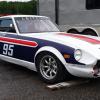

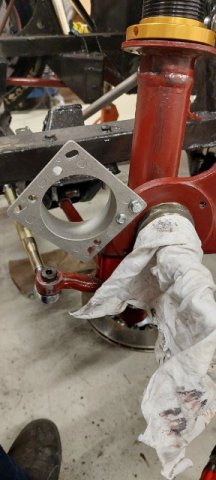
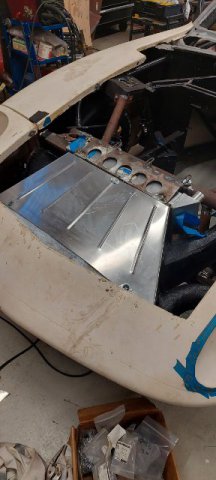
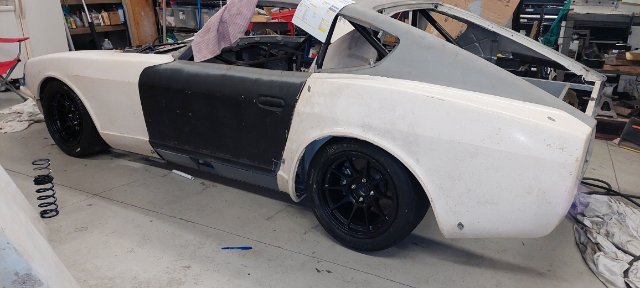
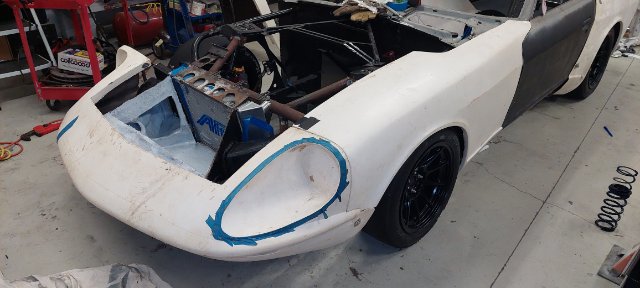


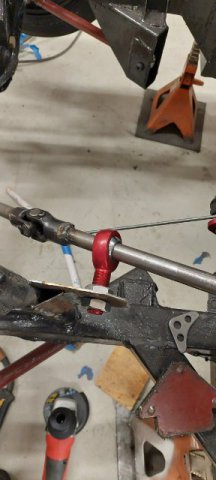
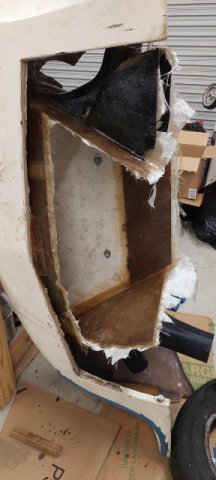
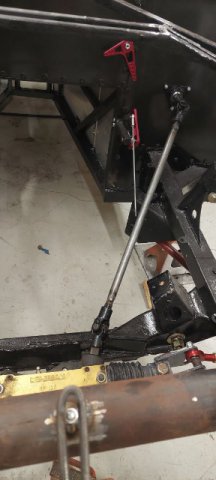

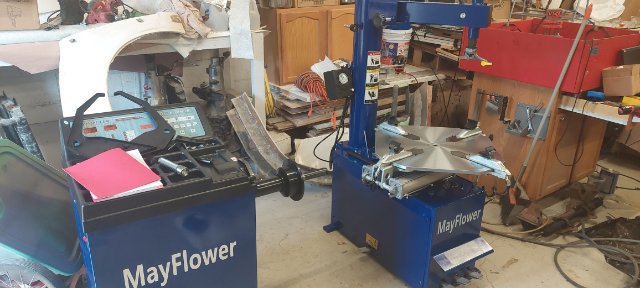

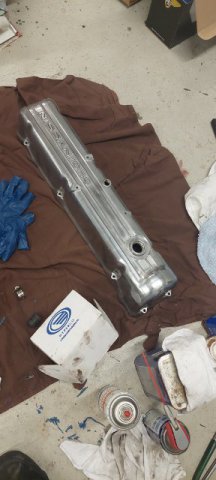

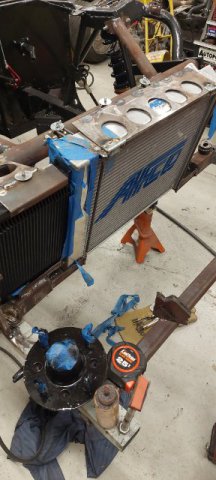
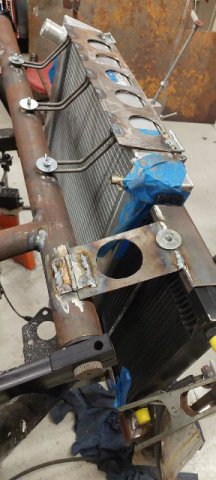
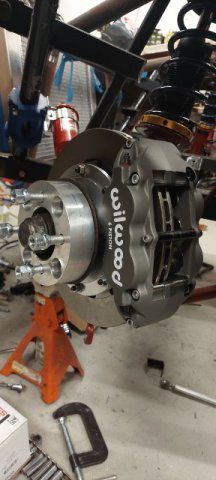
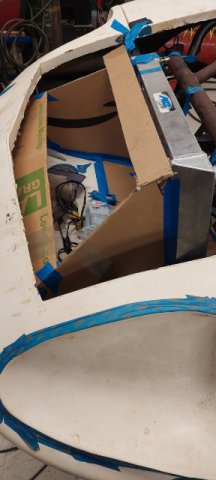

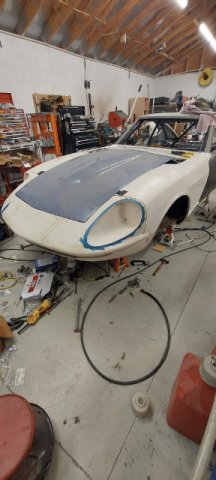
IMSA GTU vintage racer build
in S30 Series - 240z, 260z, 280z
Posted
Sounds like Cary has the answers. I would be surprised if Greg had them brazed but I dont know. He is racing the EP car again in a couple weeks but I dont think I can make it. What caliper do you run? Stock correct?
I didn't count the teeth but I think it is for a 350z? I think he said that is where the sensor came from.
No plans for block. Just a spare. Price was right.....free.